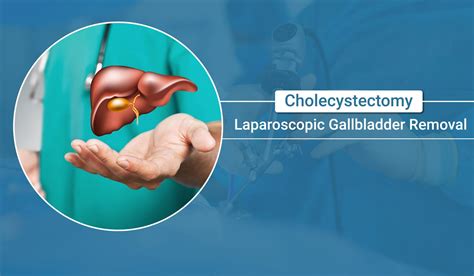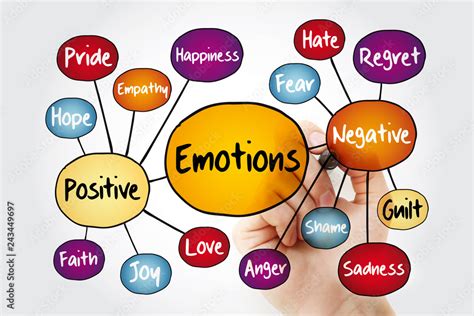Intro
Discover life after gallbladder removal, including diet changes, symptoms management, and long-term effects, to ensure a smooth post-surgery recovery and adapt to a gallbladder-free lifestyle.
Living without a gallbladder can be a significant adjustment for many people. The gallbladder is a small, pear-shaped organ located under the liver that plays a crucial role in digesting fats. When the gallbladder becomes inflamed, infected, or develops stones, surgical removal may be necessary. This can be a life-changing experience, and understanding what to expect after gallbladder removal is essential for a smooth recovery.
The decision to remove the gallbladder is typically made when the risks associated with keeping the organ outweigh the benefits. For example, if gallstones are causing recurrent pain, inflammation, or infection, removing the gallbladder can provide relief and prevent future complications. While the thought of living without a gallbladder may seem daunting, many people adapt well to the change and experience significant improvements in their overall health and quality of life.
In the initial stages after surgery, patients may experience some discomfort, fatigue, and changes in bowel movements. However, with time, the body adapts to the new digestive system, and most people are able to resume their normal activities without significant restrictions. It's essential to follow a healthy diet, stay hydrated, and take any prescribed medications to ensure a smooth transition. As patients navigate this new chapter in their lives, they may wonder what to expect and how to manage their health effectively.
Understanding the Gallbladder Removal Procedure

Types of Gallbladder Removal Surgery
There are two primary types of gallbladder removal surgery: open cholecystectomy and laparoscopic cholecystectomy. Open cholecystectomy involves making a single, larger incision in the abdomen to access the gallbladder. This approach is typically reserved for more complex cases or when the patient has had previous abdominal surgery. Laparoscopic cholecystectomy, on the other hand, is a minimally invasive procedure that involves making several small incisions. This approach is generally preferred, as it results in less post-operative pain, shorter recovery times, and reduced scarring.Recovery and Aftercare

In the first few weeks after surgery, patients may experience some discomfort, fatigue, and changes in bowel movements. This is usually due to the body adapting to the new digestive system and can be managed with over-the-counter pain medications and a gentle diet. It's crucial to stay hydrated by drinking plenty of water and other fluids to help the body heal and prevent constipation.
Dietary Changes After Gallbladder Removal
After gallbladder removal, patients may need to make some dietary adjustments to ensure proper digestion and prevent discomfort. A low-fat diet is often recommended in the initial stages, as the body adapts to the new digestive system. Foods high in fat can be difficult to digest and may cause discomfort, bloating, and diarrhea. Patients may need to avoid or limit foods such as:- Fried foods
- High-fat meats
- Full-fat dairy products
- Oils and fatty sauces
Instead, patients can focus on eating a balanced diet that includes plenty of fruits, vegetables, whole grains, and lean protein sources. It's also essential to eat smaller, more frequent meals to help the body digest food more efficiently.
Managing Digestion After Gallbladder Removal

In some cases, patients may experience more severe digestive issues, such as malabsorption or chronic diarrhea. This can be due to various factors, including:
- Bile salt deficiency
- Pancreatic insufficiency
- Small intestine bacterial overgrowth (SIBO)
If patients experience persistent or severe digestive issues, they should consult their doctor for further evaluation and treatment.
Long-Term Effects of Gallbladder Removal
The long-term effects of gallbladder removal are generally minimal, and most patients are able to resume their normal activities without significant restrictions. However, some patients may experience:- Increased risk of bowel cancer
- Malabsorption of fat-soluble vitamins
- Bile salt deficiency
- Chronic diarrhea or constipation
Regular follow-up appointments with the doctor can help monitor for any potential complications and ensure that patients receive proper treatment and management.
Coping with Emotional Changes After Gallbladder Removal

Patients can cope with emotional changes by:
- Seeking support from family and friends
- Joining a support group or online community
- Practicing stress-reducing techniques, such as meditation or yoga
- Focusing on overall health and wellness
It's essential to remember that emotional changes are a normal part of the recovery process, and seeking help is a sign of strength, not weakness.
Returning to Normal Activities After Gallbladder Removal
After gallbladder removal, patients can typically resume their normal activities within a few weeks. However, it's essential to follow the surgeon's instructions regarding post-operative care and to listen to the body. Patients may need to:- Avoid heavy lifting or bending
- Avoid strenuous exercise or activity
- Take regular breaks to rest and recover
By following these guidelines and taking the time to recover, patients can ensure a smooth transition and reduce the risk of complications.
Maintaining a Healthy Lifestyle After Gallbladder Removal

- Eating a balanced diet
- Staying hydrated
- Exercising regularly
- Managing stress
By prioritizing overall health and wellness, patients can reduce the risk of complications and ensure a smooth transition to life without a gallbladder.
Conclusion and Next Steps
Gallbladder removal can be a life-changing experience, but with the right guidance and support, patients can navigate this new chapter in their lives. By understanding the procedure, recovery, and aftercare, patients can take control of their health and well-being. If you have any questions or concerns about gallbladder removal, consult your doctor or a qualified healthcare professional.What are the risks and complications of gallbladder removal?
+The risks and complications of gallbladder removal include infection, bleeding, and injury to surrounding tissues. In rare cases, patients may experience more severe complications, such as bile duct injury or bowel obstruction.
How long does it take to recover from gallbladder removal surgery?
+Recovery time from gallbladder removal surgery typically ranges from a few weeks to several months. Patients can usually resume their normal activities within 2-4 weeks, but it may take longer to fully recover.
Can I eat a normal diet after gallbladder removal?
+After gallbladder removal, patients may need to make some dietary adjustments to ensure proper digestion and prevent discomfort. A low-fat diet is often recommended in the initial stages, and patients may need to avoid or limit foods high in fat.
Will I need to take any medications after gallbladder removal?
+After gallbladder removal, patients may need to take bile salts or other supplements to help with fat digestion and absorption. In some cases, patients may also need to take medications to manage digestive issues or prevent complications.
Can I exercise after gallbladder removal?
+After gallbladder removal, patients can typically resume their normal exercise routine within a few weeks. However, it's essential to follow the surgeon's instructions regarding post-operative care and to listen to the body.
